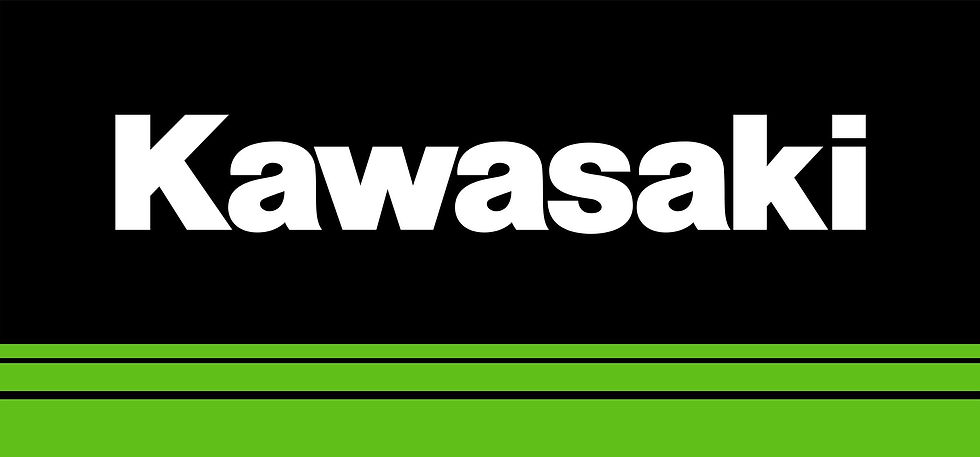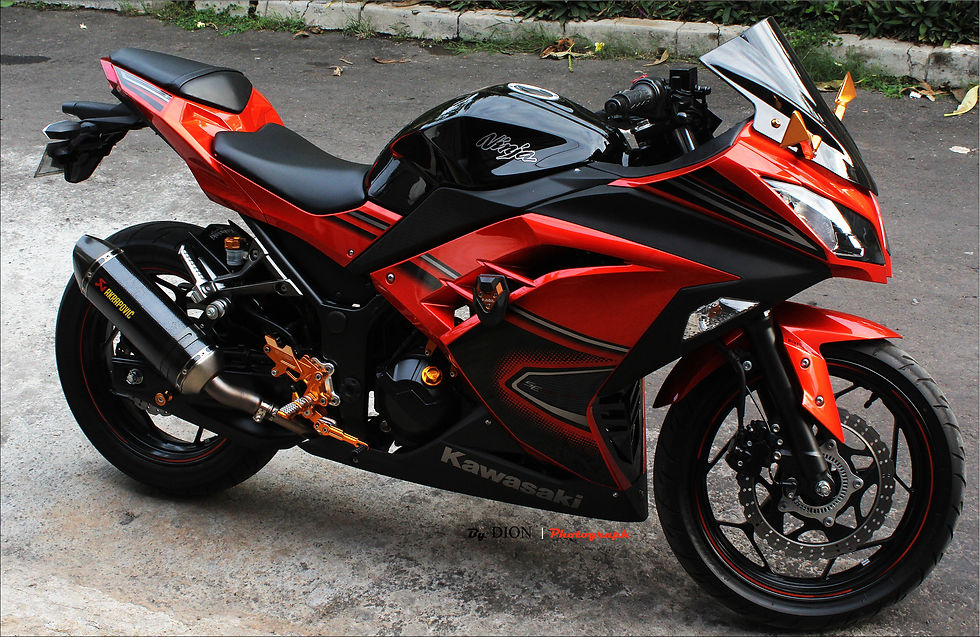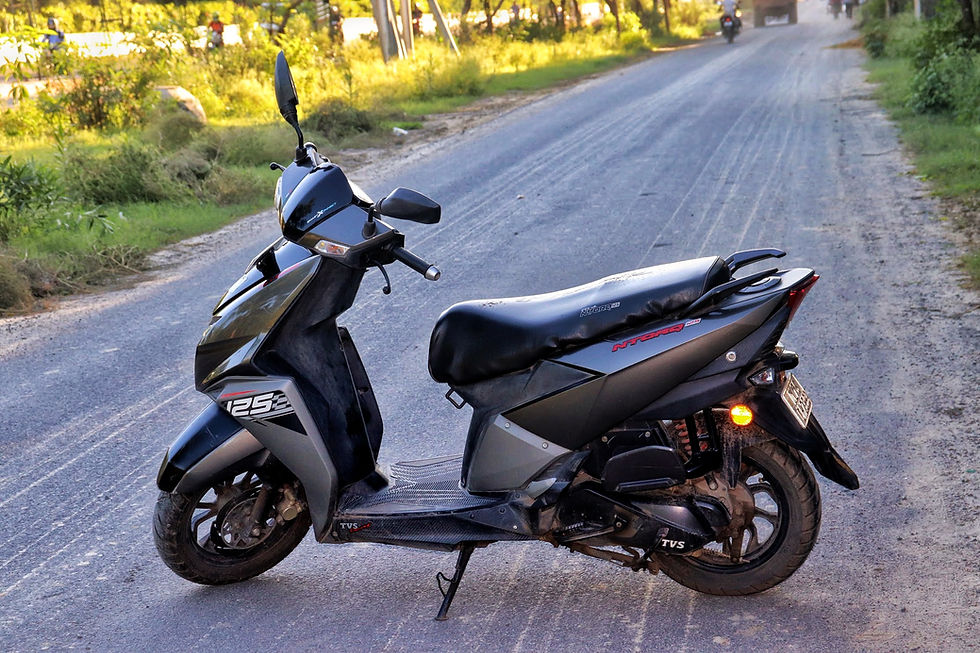Kawasaki Ninja 300 (ABS version)
- Torque Cartel

- Jun 7, 2020
- 5 min read
Updated: Dec 11, 2020
Back in the days when I was a little boy, I always had this obsession of voguishly ritzy bikes that whether or not fast in the real world, had this imposing stance as if they were about to set the tarmac on fire and shoot off to the horizon. Even though I had almost no knowledge about bikes back then, one thing that I knew for sure was Kawasaki meant speed. And now, when I’m finally able enough to understand bikes, it won’t be erroneous to associate this brand with speed particularly when we have bikes like the ZX10R, ZX14R and the Herculean H2. Over the years Kawasaki has managed to provide us with offerings that showcase the precision and a matchless level of fine engineering, not only in the litre class segment, but in all the respective segments of moto industry. With the same inspiration and expertise Kawasaki launched a bike few years back. A bike that even today looks just as stunning as a Kawasaki should starting from a ZX10R inspired front end to the ZX14R styled body panels. Even the paint job is as immaculate as any other Kawasaki with the stance of a poser that might fool a few for it to think of a middle weight or a higher capacity sports bike. Fit and finish befitting to that of a premium product with a design that might leave you awe-stricken. So, without further ado I would like to walk you through the ride impression of the Kawasaki Ninja 300.

Now this whippersnapper member of the Ninja family seeks to call attention to its 296cc Liquid Cooled 4-stroke DOHC 8 valve parallel twin motor with Fuel Injection that uses shorter connecting rods than its predecessor, the Ninja 250, along with lighter aluminium cylinders and shorter pistons with a bore and stroke figures of 62mm X 49mm. All these technical advancements have resulted in a power output of 39PS @ 11000rpm and 27NM @ 10000 rpm along with a 13000 rpm red line. The high revving nature of this engine takes the riding experience couple of notches higher which is further elevated with a precise throttle calibration. The team green has added atomising injectors and dual throttle valves which precisely control air intake resulting in an effortless throttle delivery. It also aids in combustion efficiency resulting in a linear torque delivery which makes ambling around town a breeze. With ample grunt available at lower revs frequent gear changes are not required and even if you do, the 6-speed gearbox with a roller type shift drum ensures that the gearshifts never feel clunky. Even the Slip and Assist clutch perfectly complements the gearbox by providing aggressive downshifts without getting the rear wheel locked up. Now, in order to excel as a thorough sports package, the chassis of the bike must complement the engine and the gearbox. This is where the racing heritage of Kawasaki speaks for itself as the chassis used here is simply magical. This baby Ninja is underpinned by a Diamond Steel Tubular frame that has been developed on a race track which is evident the moment you attack a corner. The chassis feels stable in long sweepers, weight transfer at switchbacks is predictable and even the high speed stability is astonishing. What complements the chassis furthermore is the suspension setup where the front gets 37mm Telescopic unit with a travel of 120mm and the rear comes shod with a Bottom Link Uni-Trak gas charged 5-way adjustable shock with a travel of 132mm. All of this means that the bike is stiff enough to dart into corners with utmost poise while being merciful on your spine when you hit a porthole. To draw out a comparison here, it’s stiffer than the R3 but not as jarringly stiff as the RC 390. You see that’s what makes the Kawasaki Ninja 300 one of the best compromises in this segment when it comes to riding agility and overall comfort. Even the raised clip-ons, wide and comfortable seat along with centre set footpegs showcase the commuting abilities of this Ninja. Maybe this is the reason why most of the Ninja 300 owners consider this to be one of the most alluring sports tourer in this segment. Another area where I am largely impressed is the heat management of this bike. Kawasaki has developed a system for this bike that directs the hot air down instead of channelling it out from the side body panel vents abetting to a much better ride experience. Technical bits like these exhibit the fact that, be it a litre class super sport or a quarter litre sports tourer, Kawasaki pays immense heed even to the smallest details and the same can be said about the brakes as well. The single 290mm petal rotor at the front accompanied by a 220mm disc at the rear ensure that the brakes have adequate stopping power to shred speeds in a jiffy without locking up the rear wheel as it gets a single channel ABS as well. With all such technical widgets along with a brand name which is globally renowned for its racing prowess it’s quite susceptible for anyone to consider this Ninja a par excellence machine, but it isn’t.

Just like the two sides of a coin, this exceptional Ninja has its share of shortcomings too. First up, the kerb weight of the bike which at 172kgs is pretty decent by class standards, however at the switchbacks the weight transfer is quite evident. It’s not as razor sharp as an RC or even the RR 310, both of which possess incredible dynamic abilities. Now we all know that an appropriate set of tyres can make a world of difference to how a bike handles, an area where the Ninja 300 lacks in particular. The IRCs impede the Ninja by a fair margin from letting it showcase the full potential of its chassis and other components which Kawasaki has thoughtfully bestowed this bike with. In my opinion the Metzellers would be a fair choice to go for. Another key mention here would be the fuel economy which takes a major hit especially when you have a free revving engine. Still for some this might not be a concern but what definitely is going to be a concern is the price tag. Despite of an aggressive price slash of nearly ₹64000, at ₹2.96 lakhs ex showroom the Ninja 300 is still ₹40000 expensive than the RC 390, which in every possible aspect nimbly outrivals the Ninja. So what should we do then, consider this baby Kawasaki or just ignore it?

Now I understand that price plays a decisive role when a buyer goes looking for the available options, but then there are a few options that in spite of being overpriced are hard to resist. Similarly in this case, despite RC 390’s equipment and riding finesse, it’s inevitable to ignore the Ninja. It might not boast class leading power figures but what it does showcase is a glimpse of Kawasaki’s racing and touring lineage which makes it an especial proposition, if you can somehow ignore the pricing.
Author - Soumil Dey



Cool 👍🏻
Nice.
Descriptive and detailed information